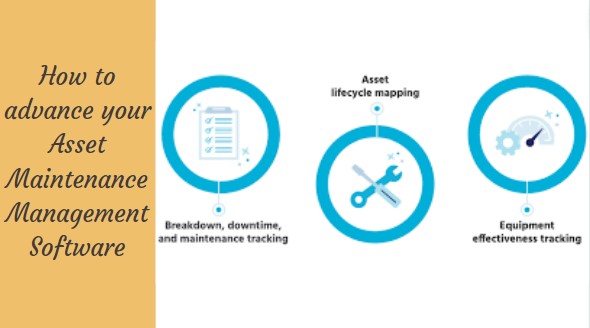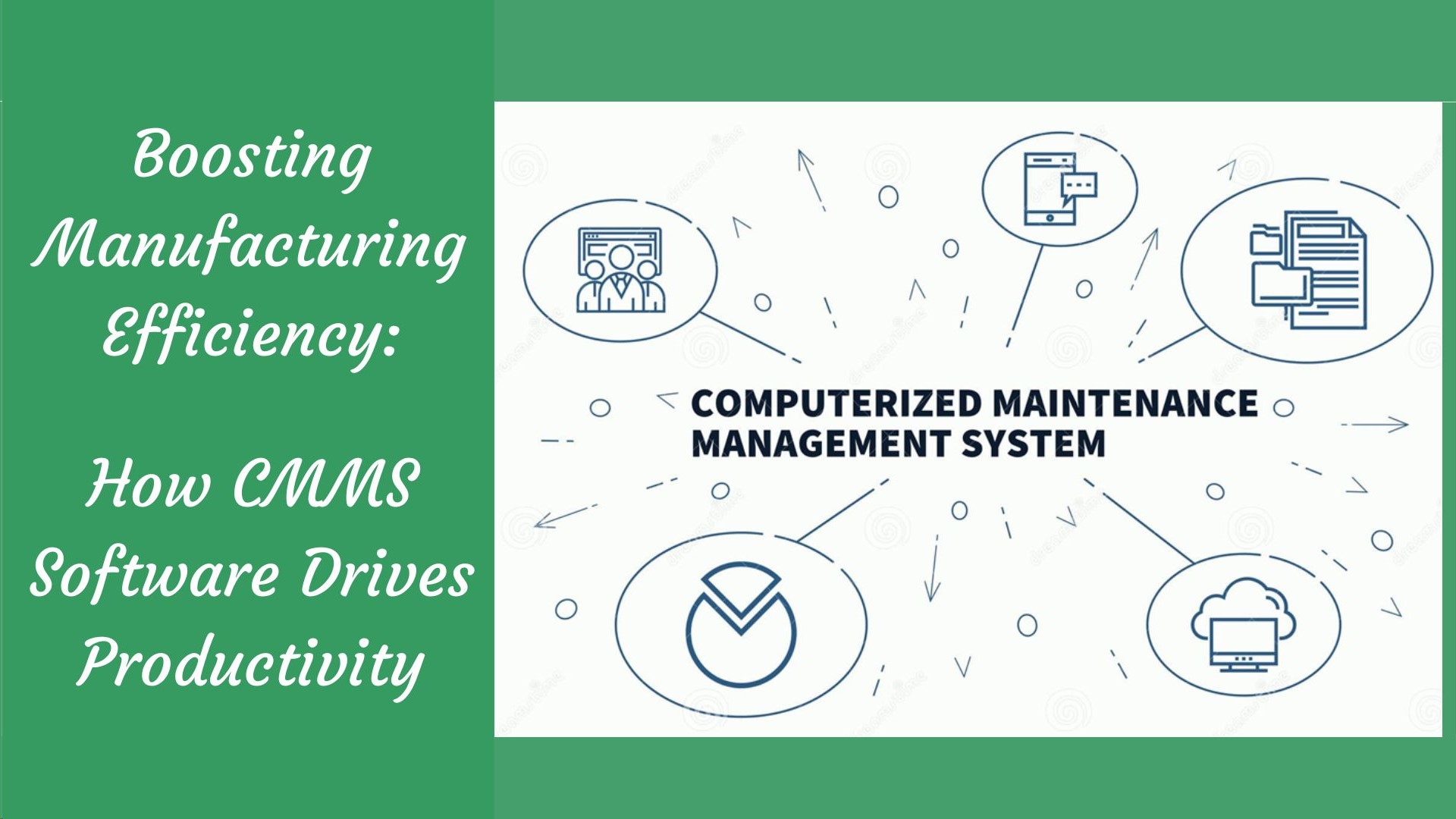
5 Best practices to advance your Asset Maintenance Management Software
Madhurima Sanyal |
24 Jun 2024 |
08:58 AM
- Understanding Asset Maintenance
- Importance of Asset Maintenance
- How Proptor's Asset Maintenance Management software helps?
- Optimizing Asset Maintenance
- Conclusion

Boosting Manufacturing Efficiency: How CMMS Software Drives Productivity
Madhurima Sanyal 05 May 2024 | 10:17 AMDiscover how CMMS software revolutionizes maintenance efficiency in manufacturing. Learn how to boost productivity, reduce downtime, and achieve cost-effective operations in this insightful guide!...
Asset maintenance stands as the backbone of efficient operations for any business, ensuring equipment, machinery, and infrastructure remain at their peak performance levels. Let's delve into the core aspects of asset maintenance and why it's critical for businesses of all scales and industries.
Understanding Asset Maintenance
Asset management revolves around the systematic approach of preserving, servicing, and managing the lifecycle of critical assets within an organization. It encapsulates a spectrum of activities aimed at prolonging the usable life of assets, reducing breakdowns, and optimizing overall performance. Think of it as a proactive strategy to keep your machinery, technology, and infrastructure in prime condition.
Significance of Asset Maintenance
The importance of asset maintenance cannot be overstated. Efficient maintenance procedures lead to increased operational uptime, minimized disruptions, and cost savings in the long run. By addressing issues before they escalate into major problems, effective asset management ensures a smooth workflow, resulting in higher productivity and customer satisfaction.
Differentiating Asset Maintenance vs. Asset Management
While these terms are sometimes used interchangeably, they hold distinct meanings. Asset maintenance focuses primarily on the upkeep and care of assets to prevent failures and optimize performance. On the other hand, asset management refers to a broader spectrum encompassing the strategic planning, procurement, utilization, and disposal of assets throughout their lifecycle. Understanding this distinction is vital for implementing comprehensive asset management strategies.
Importance of Asset Maintenance
Why Asset Maintenance Matters
Effective asset maintenance is the bedrock of operational continuity. It ensures that machinery, equipment, and infrastructure remain in optimal working condition, reducing the risk of unexpected breakdowns or disruptions. This reliability translates into increased productivity, minimized downtime, and substantial cost savings over time.
Key benefits of robust asset maintenance include:
-
Enhanced Reliability: Consistent maintenance schedules bolster the reliability of assets, fostering a dependable operational environment.
-
Cost Savings: Proactive maintenance mitigates the need for major repairs or replacements, reducing long-term expenditure.
-
Increased Safety: Well-maintained assets contribute to a safer working environment for employees, minimizing accidents and hazards.
-
Extended Lifespan: Regular maintenance extends the usable life of assets, maximizing their value for the organization.
Key Components of Effective Maintenance Management Strategies:
-
Scheduled Inspections and Maintenance: Regular checks and timely repairs prevent potential issues from escalating.
-
Utilization of Technology: Implementing modern tools like predictive analytics or IoT sensors for real-time asset monitoring.
-
Skilled Workforce: Training and empowering maintenance teams to handle diverse tasks efficiently.
-
Data-Driven Decision Making: Utilizing historical data and analytics to predict maintenance needs and optimize schedules.
Understanding and integrating these components into your maintenance management framework is critical for achieving optimal asset performance and longevity.
Best Practices for Advanced Asset Maintenance
Implementing Preventive Maintenance Strategies
Preventive maintenance involves scheduled inspections, routine upkeep, and proactive repairs to prevent potential breakdowns or failures. By creating a maintenance calendar based on manufacturer recommendations and historical data, organizations can significantly reduce unexpected downtime and elongate asset lifespan.
Leveraging Asset Tracking for Optimal Performance
Utilizing advanced asset tracking technology enables real-time monitoring of asset conditions, locations, and usage patterns. Incorporating RFID or GPS tracking systems empowers businesses to streamline inventory management, track maintenance history, and predict maintenance needs accurately.
Utilizing Maintenance Management Systems
Integrating computerized maintenance management systems (CMMS) streamlines maintenance tasks, work orders, and resource allocation. These systems centralize data, enable predictive analytics, and facilitate efficient communication among maintenance teams, ensuring swift and organized workflows.
Incorporating Predictive Maintenance Techniques
Predictive maintenance harnesses the power of data and predictive analytics to forecast potential equipment failures. By analyzing historical data and patterns, businesses can predict maintenance needs accurately, thereby optimizing maintenance schedules and minimizing downtime.
Embracing Automation and Technology
Automation through IoT devices and AI-driven solutions revolutionizes asset maintenance. Automated sensors detect anomalies, trigger maintenance alerts, and even initiate repair tasks, minimizing human error and enhancing overall asset performance.
Insights into Maintenance Management software
Understanding Maintenance Management's software Role
Maintenance management software revolutionizes the way businesses handle maintenance tasks. These digital solutions streamline work order management, track asset history, schedule preventive maintenance, and facilitate data-driven decision-making. By centralizing information and automating processes, such software enhances productivity while minimizing downtime.
How Proptor's Asset Maintenance Management software helps?
Proptor offers a comprehensive Asset Management Software designed to streamline and enhance maintenance processes for businesses across various industries. This advanced software solution is tailored to address the diverse needs of managing assets effectively, ensuring their longevity and optimal performance.
Key features:
1. Preventive Maintenance Scheduling:
Proptor's software facilitates the scheduling of maintenance tasks, allowing users to set up regular checks and inspections. This feature helps in identifying and resolving potential issues before they escalate, reducing unexpected downtimes.
2. Work Order Management:
The platform provides a centralized system for creating, assigning, and tracking work orders. It ensures that maintenance tasks are efficiently organized, managed, and completed within specified timelines.
3. Asset Tracking and Monitoring:
Utilizing cutting-edge technology such as RFID or barcode systems, Proptor enables real-time asset tracking. Users can monitor asset locations, status, usage patterns, and maintenance history, ensuring comprehensive asset visibility.
4. Maintenance History and Analytics:
Proptor's software maintains a detailed history of asset maintenance activities. By leveraging analytical insights derived from this data, businesses can make informed decisions regarding asset management strategies.
5. Customizable Reporting and Dashboards:
The software offers customizable reporting functionalities, allowing users to generate insightful reports and visual dashboards. This feature aids in assessing performance metrics, identifying trends, and facilitating data-driven decision-making.
6. Integration Capabilities:
Proptor's software seamlessly integrates with other enterprise systems, such as ERP or CRM software, ensuring smooth data flow across different departments and enhancing overall operational efficiency.
7. User-Friendly Interface:
The user interface is designed to be intuitive and user-friendly, ensuring ease of navigation and accessibility for users with varying technical expertise.
8. Mobile Accessibility:
With mobile accessibility, users can manage maintenance tasks, access asset information, and create work orders remotely, enhancing flexibility and responsiveness.
Proptor's Asset Management Software is a CMMS (computerized maintenance management system) software that empowers businesses to streamline maintenance operations, optimize asset performance, and maximize their operational efficiency through a user-centric, comprehensive software solution. Book a demo with Proptor's Asset Maintenance Management Software today.
Optimizing Asset Maintenance
Tips and Techniques for Effective Asset Maintenance Management
-
Regular Inspections and Audits: Conduct routine inspections to identify potential issues before they escalate. Regular audits ensure assets remain in optimal condition, preventing unexpected breakdowns.
-
Prioritize Preventive Maintenance: Embrace a proactive approach by scheduling routine maintenance tasks. It helps in extending asset lifespan and minimizing disruptions.
-
Invest in Training Programs: Ensure your maintenance team receives adequate training on handling various equipment. A skilled workforce is crucial for efficient asset upkeep.
-
Utilize Technology for Monitoring: Implement asset tracking systems leveraging IoT or RFID technology. Real-time monitoring aids in tracking asset health, usage patterns, and predicting maintenance needs.
-
Data-Driven Decisions: Utilize historical asset data and analytics to make informed decisions. Analyzing trends helps in optimizing maintenance schedules and resource allocation.
Strategies for Improving Maintenance Operations
-
Implement CMMS Software: Adopt Computerized Maintenance Management Systems to streamline maintenance operations. CMMS software organizes work orders, tracks inventory, and schedules tasks efficiently.
-
Establish Clear Protocols and Procedures: Define standardized protocols for operational tasks. Having clear guidelines ensures consistency and reduces errors during asset maintenance activities.
-
Embrace Predictive Maintenance: Integrate predictive maintenance techniques using AI and machine learning. Predictive analytics aids in forecasting potential failures, allowing proactive interventions.
-
Encourage Collaborative Work: Foster collaboration between maintenance and other departments. A collaborative approach ensures seamless communication and a holistic view of asset management.
These tips and strategies form the cornerstone of successful asset maintenance management, ensuring optimal performance and longevity of assets.
Conclusion
Adopting these five best practices plays a pivotal role in optimizing operations and ensuring sustained functionality across industries empowering asset maintenance management program for an organization.
The essence of advanced asset maintenance management lies in its pivotal role in optimizing operations and ensuring sustained functionality across industries through five key practices. These practices encompass proactive strategies such as preventive maintenance and predictive analytics, extending asset longevity while minimizing replacement costs and maximizing ROI. Moreover, efficient asset management reduces unplanned downtime, fostering operational continuity and productivity through robust maintenance schedules and asset tracking systems.
Notably, strategic maintenance not only prevents unexpected breakdowns but also optimizes overall maintenance costs, ensuring resource allocation efficiency. Furthermore, regular maintenance checks and preventive strategies not only ensure compliance with safety regulations but also create a safer work environment by mitigating risks associated with malfunctioning equipment. Lastly, the utilization of data analytics derived from maintenance activities empowers businesses to make informed decisions, enabling continuous improvement in maintenance strategies through insightful analysis.
As you embark on implementing these practices, remember that this is an ongoing journey. Continual assessment, adaptation, and innovation in your maintenance strategies will keep your assets in prime condition, ensuring a competitive edge in your industry.